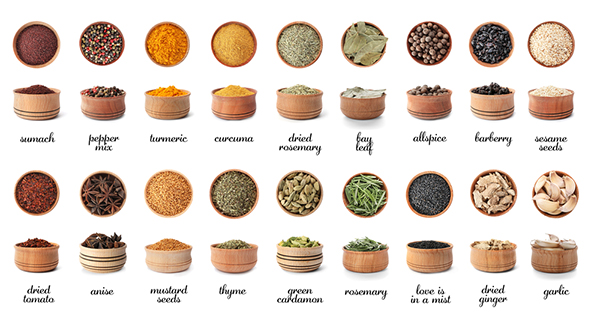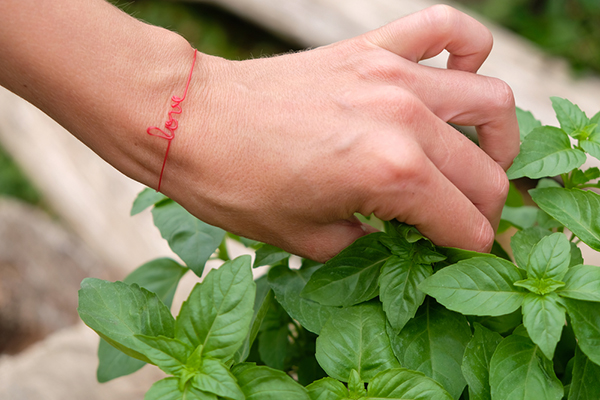Bitter Herbs: Significance, Uses, and Biblical Importance Bitter herbs have a rich history and hold significant cultural, culinary, and medicinal importance. From their crucial role in Passover traditions to their mention in the Bible, these herbs are revered for their distinctive flavors and health benefits. This article delves into what bitter herbs are, their […]
The Essential Guide to Culinary Herbs

Herbs are a cornerstone of culinary traditions around the world. They add flavor, aroma, and a touch of color to dishes, transforming ordinary meals into extraordinary experiences. This article delves into common herbs used in cooking, the best herbs to grow at home, the top choices for culinary use, and the various types of herbs you can incorporate into your cooking.
Common Herbs for Cooking
Several herbs have become staples in kitchens due to their versatility and flavor profiles. Here are some of the most commonly used culinary herbs:
- Basil: Known for its sweet and slightly peppery flavor, basil is a key ingredient in Italian cuisine, particularly in pesto and tomato-based dishes.
- Parsley: With its fresh, slightly peppery taste, parsley is often used as a garnish but also enhances the flavor of soups, stews, and salads.
- Thyme: This herb has a subtle earthy taste and is frequently used in Mediterranean dishes, as well as in soups, stews, and roasted meats.
- Rosemary: Rosemary’s robust, pine-like flavor makes it ideal for seasoning roasted meats and vegetables.
- Cilantro: Known for its distinct, citrusy flavor, cilantro is a staple in Latin American and Asian cuisines.
- Dill: With its fresh, slightly tangy taste, dill is often used in pickling, as well as in fish dishes and salads.
- Oregano: This herb has a strong, slightly bitter flavor and is commonly used in Italian, Greek, and Mexican dishes.
Best Herbs to Grow for Cooking
Growing your own herbs can be incredibly rewarding, offering fresh flavors and convenience. Here are some of the best herbs to grow for culinary use:
- Basil: Basil thrives in warm, sunny conditions and is perfect for growing in pots or garden beds.
- Mint: Mint is easy to grow and spreads quickly, making it ideal for container gardening to control its growth.
- Chives: These hardy herbs can be grown indoors or outdoors and add a mild onion flavor to dishes.
- Thyme: Thyme is a low-maintenance herb that grows well in sunny spots with well-drained soil.
- Rosemary: This perennial herb can be grown in pots or garden beds and prefers a sunny, dry environment.
- Parsley: Parsley can be grown in partial shade and is a great addition to any herb garden.
- Sage: Sage is a hardy herb that prefers well-drained soil and full sun, making it a perfect addition to your garden.
Best Herbs for Cooking
When it comes to cooking, some herbs stand out due to their flavor, versatility, and the depth they add to dishes. Here are the top herbs for culinary use:
- Basil: Its sweet and peppery flavor makes it a favorite for Italian and Southeast Asian cuisines.
- Thyme: With its earthy notes, thyme complements a wide range of dishes from roasted meats to vegetables.
- Rosemary: Its strong, aromatic flavor pairs well with roasted meats, especially lamb and poultry.
- Oregano: Essential in Italian and Greek cooking, oregano adds a robust flavor to pizzas, pastas, and grilled meats.
- Sage: Known for its slightly peppery flavor, sage is commonly used in stuffing, sausages, and with fatty meats.
- Cilantro: Its fresh, citrusy flavor is a key ingredient in many Mexican, Indian, and Thai dishes.
- Dill: Adds a fresh, tangy flavor to fish, potatoes, and pickles.
Types of Herbs for Cooking
Herbs can be categorized based on their flavor profiles and culinary uses. Here are the main types:
- Sweet Herbs: These herbs, such as basil, mint, and tarragon, add a sweet, aromatic flavor to dishes.
- Savory Herbs: Herbs like thyme, rosemary, and sage fall into this category, known for their earthy and robust flavors.
- Citrusy Herbs: Cilantro and lemon balm are examples of herbs with a bright, citrusy flavor that can add freshness to dishes.
- Peppery Herbs: Herbs like parsley and arugula have a slight peppery taste that enhances the flavor of salads and garnishes.
Book Review: “Herbs for Cooking” by David George
David George’s “Herbs for Cooking: A Practical Guide” is an excellent resource for both novice and experienced cooks. The book offers a comprehensive overview of various herbs, their culinary uses, and tips for growing them at home. George’s practical advice and easy-to-follow instructions make this book a valuable addition to any kitchen. The detailed descriptions of each herb, along with recipes and growing tips, provide readers with the knowledge they need to elevate their cooking with fresh, flavorful herbs.
In conclusion, incorporating herbs into your cooking not only enhances the taste of your dishes but also brings a touch of nature to your kitchen. Whether you are growing your own herbs or using store-bought ones, understanding the different types and their uses can significantly improve your culinary creations. Happy cooking!






